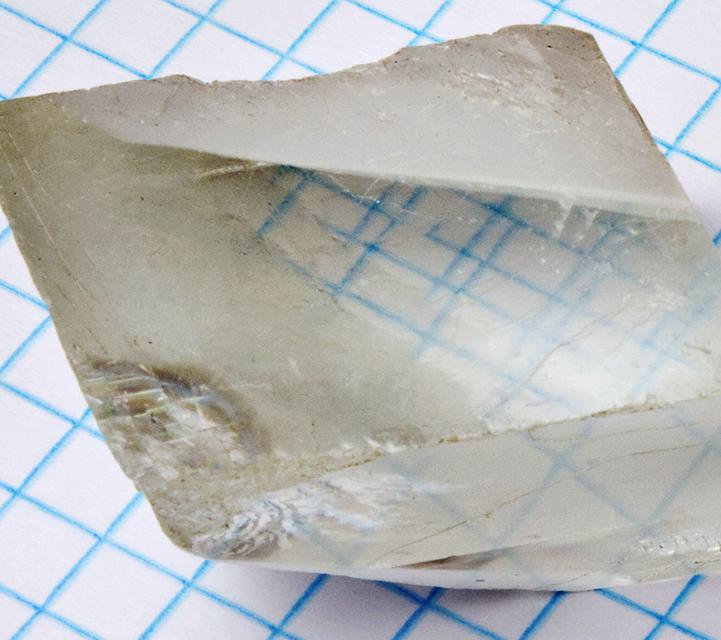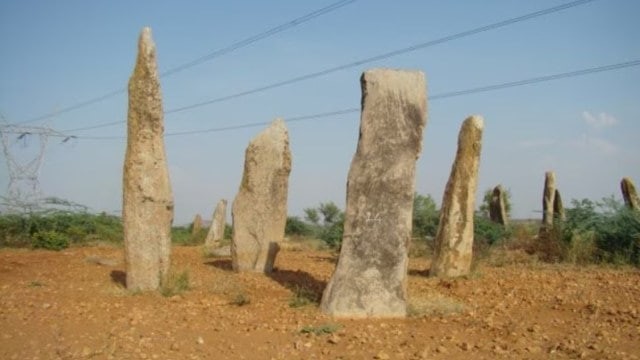India’s Space Docking Capability

- 17 Mar 2025
In News:
Recently, ISRO successfully demonstrated autonomous space docking and undocking with its Space Docking Experiment (SpaDEx), making India the fourth country—after the USA, Russia, and China—to achieve this advanced space capability.
Two satellites, SDX01 (Chaser) and SDX02 (Target), were launched into a 470 km orbit. From a starting separation of 20 km, they were autonomously maneuvered, docked using an indigenous androgynous docking mechanism, and later undocked after two months of in-orbit operation.
What is Space Docking and Why It Matters?
Docking is the process where two spacecraft in orbit are brought together and joined. Undocking is the controlled separation of these joined vehicles. These procedures are vital for:
- Assembling large structures (e.g., space stations) in orbit, bypassing launch weight limits.
- Orbital servicing of satellites (repairs, refueling).
- Interplanetary missions requiring in-space assembly and resupply.
- Crewed missions to space stations and planetary bodies (e.g., Moon, Mars).
Historical Context
- 1966 (USA): First manual docking by NASA’s Gemini VIII (Neil Armstrong with Agena).
- 1967 (USSR): First autonomous docking using Kosmos 186 & 188.
- 2011–12 (China): First unmanned and then crewed docking.
- 2025 (India): Successful autonomous docking and undocking via SpaDEx.
Strategic and Technological Significance for India
Future Missions:
- BharatiyaAntariksh Station (BAS) by 2035 and Human Moon Mission by 2040 will rely heavily on in-orbit docking and assembly.
- Chandrayaan-4, aiming to return lunar samples, will use docking systems for orbital rendezvous and return modules.
Global Space Economy
- Positions ISRO as a leader in modular satellite design, orbital assembly, and international collaborations.
- Enables NewSpace India Ltd. (NSIL) to attract commercial contracts for space stations, satellite servicing, and deep-space ventures.
Domestic Technological Advancements
- Promotes indigenous innovation in docking systems, AI-driven autonomous navigation, robotics, and in-space power sharing.
- Supports R&D in microgravity, space manufacturing, and even space agriculture (e.g., orbital seed germination experiments).
Strategic and Diplomatic Impact
- Enhances India’s soft power and strengthens ties with space agencies like NASA and ESA.
- Contributes to space security by enabling orbital refueling and satellite servicing during emergencies.
- Offers collaborative platforms for BRICS and developing countries through BAS.
Capacity Building
- Encourages STEM education and youth engagement via initiatives like YUVIKA.
- Expands India’s aerospace industrial base, creating skilled jobs and fostering innovation.
Birefringence

- 17 Mar 2025
Context:
Birefringence, or double refraction, is an optical phenomenon observed in certain anisotropic materials where a single light ray splits into two rays upon entering the material. Each ray travels at a different speed and experiences a different refractive index based on the direction of light propagation and its polarization.
Refraction vs Birefringence
- Refraction is the bending of light as it passes from one medium to another due to a change in speed. It is governed by the refractive index, defined as the ratio of the speed of light in a vacuum to its speed in the medium.
- Birefringence occurs when a material has multiple refractive indices in different directions, causing light to split into two rays.
Key Terms
- Refractive Index:
- Vacuum: 1
- Air: ≈1.0003
- Glass: ≈1.5
- Diamond: ≈2.4
- Polarization: The direction in which the light’s electric field oscillates. It influences how light behaves in birefringent media.
Types of Materials
- Isotropic Materials:
- Structure is uniform in all directions.
- Refractive index is the same regardless of direction.
- Examples: Glass, Sodium Chloride (NaCl).
- Anisotropic Materials:
- Structure varies along different crystal axes.
- Show different refractive indices in different directions.
- Exhibit birefringence.
- Examples: Calcite, Quartz, Mica, Tourmaline.
Sources of Birefringence
- Natural Birefringent Materials: Calcite, Mica, Quartz.
- Synthetic Birefringent Materials: Barium borate, Lithium niobate.
- Induced Birefringence: Can be generated by applying mechanical stress, electric, or magnetic fields to otherwise non-birefringent materials.
Applications of Birefringent Materials
- Liquid Crystal Displays (LCDs)
- Medical and Polarising Microscopes
- Optical Switches and Waveplates
- Laser Technology
- Nonlinear Optics (e.g., Frequency Converters)
U.S. airstrikes in Yemen

- 17 Mar 2025
In News:
In March 2025, the United States launched a series of airstrikes on Houthi-controlled areas in Yemen, targeting bases, missile defenses, and key leadership. The operation aimed to neutralize threats to international shipping and assert freedom of navigation through the vital Bab-el-Mandeb Strait. The Houthis, backed by Iran, vowed retaliation, intensifying tensions in an already volatile region.
Who are the Houthis?
- Sect and Origin: Houthis belong to the Zaidi Shia sect, primarily based in Yemen’s northwestern Sa’dah province. The movement originated in the 1990s as a sociopolitical rebellion against President Ali Abdullah Saleh’s regime.
- Role in Yemen’s Civil War: Since 2014, the Houthis have controlled large parts of Yemen, including the capital, Sana’a. They are one of the main belligerents in the civil war, opposing the internationally recognized Yemeni government (backed by Saudi Arabia and the U.S.).
- Foreign Links: The Houthis are aligned with Iran and are considered part of the Iran-led "Axis of Resistance" opposing Israel and Western interests in West Asia.
Geopolitical Importance of Yemen
- Strategic Location: Yemen borders Saudi Arabia and Oman and has coastlines along the Red Sea, Gulf of Aden, and Arabian Sea.
- Bab-el-Mandeb Strait: This narrow maritime chokepoint between Yemen and Djibouti is a crucial link between the Indian Ocean and the Mediterranean Sea (via the Suez Canal and Red Sea).
- It is essential for global oil shipments and international maritime trade.
- Disruptions here threaten energy security and commercial shipping routes.
U.S. Justification and Objectives
- Freedom of Navigation: The U.S. stated that the strikes aimed to protect commercial and naval vessels from attacks and ensure navigational freedom.
- Military Goal: According to U.S. officials, the campaign will continue until the Houthis lose the capability to threaten global shipping.
Regional Reactions
- Iran: Strongly condemned the U.S. airstrikes, asserting that Washington had no authority to dictate West Asian security dynamics.
- Houthi Response: Warned of retaliation, indicating a potential escalation in the Red Sea and Arabian Peninsula.
Mudumal Megalithic Menhirs

- 17 Mar 2025
In News:
The Mudumal Megalithic Menhirs of Narayanpet district, Telangana have been included in India’s UNESCO Tentative World Heritage Sites list in 2025, highlighting their archaeological, cultural, and astronomical significance. Telangana now has two tentative UNESCO heritage sites, the first being the Ramappa Temple (inscribed in 2021).
What are Menhirs and Megaliths?
- Menhirs are large, upright standing stones, often tapered at the top, used by prehistoric communities.
- They served ritual, memorial, or astronomical purposes and are found globally, with prominent examples in Europe such as Stonehenge (UK) and Carnac (France).
- Megaliths refer broadly to prehistoric stone structures, used for burials (like dolmens, cairns, cists) or as commemorative monuments (like menhirs).
- In India, megalithic culture thrived during the Iron Age (c. 1500 BCE–500 BCE), especially in the Deccan Plateau (Maharashtra, Karnataka, Tamil Nadu, Kerala, Andhra Pradesh, Telangana).
Significance of the MudumalMenhirs
- Age: Estimated to date back 3,500–4,000 years (1000 BCE–300 BCE).
- Site extent: Spread across 80 acres near the Krishna River, the site comprises:
- Around 80 large menhirs (10–14 feet tall).
- Nearly 3,000 alignment stones set in rows, believed to represent funerary rites and astronomical alignments.
- Astronomical importance: The alignments correspond with solar events such as solstices and equinoxes.
- A unique cup-marked stone represents the Ursa Major (Saptarshi) constellation—South Asia’s earliest known star depiction.
- Suggests advanced prehistoric knowledge of celestial navigation and calendar calculation.
Cultural and Living Traditions
- The site continues to hold spiritual value among locals.
- Menhirs are revered as "NilurallaThimmappa" (Thimmappa of the Standing Stones).
- One stone is worshipped as Goddess Yellamma, blending ancient heritage with living cultural practices.
Path Toward UNESCO World Heritage Status
- The MudumalMenhirs are among six sites added to India’s Tentative List in 2025, alongside:
- Kanger Valley National Park (Chhattisgarh)
- Ashokan Edict Sites (Multiple States)
- Chausath Yogini Temples (MP & Odisha)
- Gupta Temples (Multiple States)
- Palace-Fortresses of the Bundelas (MP & UP)
- India now has 62 sites on the Tentative List, a prerequisite for UNESCO nomination.
Subacute Sclerosing Panencephalitis (SSPE)
- 17 Mar 2025
In News:
Subacute Sclerosing Panencephalitis (SSPE) has emerged as a public health concern in Uttar Pradesh, particularly in Lucknow, due to poor measles vaccination coverage. Despite being rare globally, cases remain alarmingly high in regions with incomplete immunisation.
About SSPE:
- SSPE is a progressive and fatal neurological disorder that appears several years after a person has recovered from measles (rubeola).
- It is caused by a persistent measles virus in the brain, which triggers chronic inflammation and gradual destruction of nerve cells.
- Though globally rare, SSPE is more prevalent in areas with low immunisation rates. Males and children from low-income families are more commonly affected.
Symptoms:
- Early signs: cognitive decline, poor academic performance, behavioural changes (irritability, hallucinations), and sleep disturbances.
- Progression: seizures, involuntary muscle jerks, speech deterioration, visual impairment, and motor dysfunction.
- Advanced stage: muscle rigidity, difficulty swallowing, risk of aspiration pneumonia, coma, and eventual death.
Treatment & Prevention:
- No cure exists, and the mortality rate approaches 100%.
- Treatment focuses on symptom management; antiviral and immune-boosting drugs may slow progression.
- Timely measles vaccination is the only effective prevention strategy.
Significance for Public Health:
- SSPE underscores the critical importance of achieving universal immunisation coverage.
- Experts recommend stronger awareness campaigns and better enforcement of the Universal ImmunisationProgramme (UIP) to eliminate measles and prevent SSPE.
